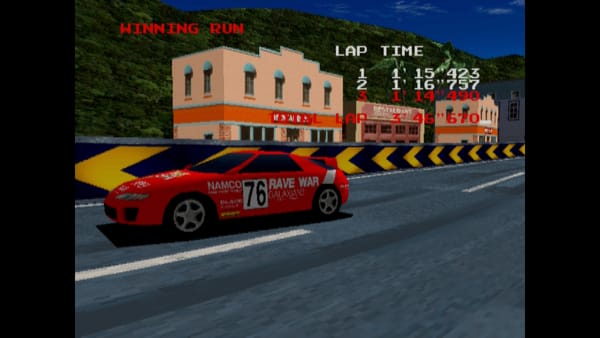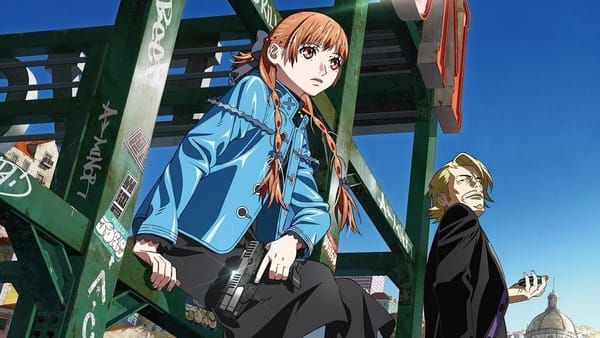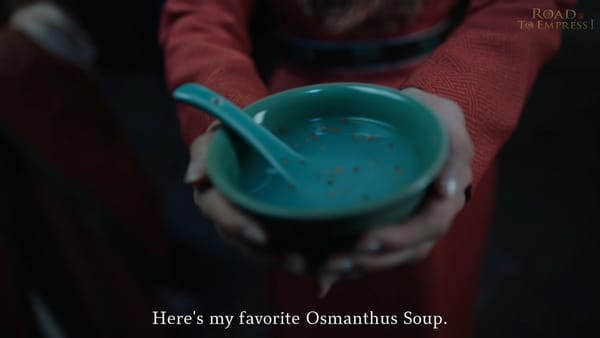Lost Judgment - First Clear Review
Japanese Movie Star Ends Bullying With Kung Fu, Good Looks
After about 25 hours I have finished the story of Lost Judgment. It seems a little silly to say I have “beaten” the game: I got a completion rate of about 25%, and even before I was finished, the game made apparent that there was a lot more left for me to see and do before I charged into battle and beat up the bad guys one last time.
Judgment is an offshoot of the Yakuza series, trading mob drama for legal thriller and keeping the fighting combat from earlier Yakuza games (before Like A Dragon, anyway). I’ve always been partial to the bone-crunching fights in most of the Yakuza series: since that format is on the way out, I’ve kind of jumped ship to Judgment.

After all, Judgment isn’t really far enough from Yakuza to genuinely consider it a separate series. You’re still a tough guy roaming the city, solving people’s problems, and getting accosted by random thugs. Detective/lawyer Takayuki Yagami (played by Japanese mega-star Takuya Kimura) is not a big dude like Yakuza’s gangster Superman Kazuma Kiryu. He opts for swift, stylish kung fu and parkour maneuvers over sheer brutality… but at the end of the day he solves cases and wins trials with his fists.
If Yakuza is a mob drama that inevitably turns into an 80s action movie, Judgment is a network TV detective procedural that inevitably turns into an 80s action movie.
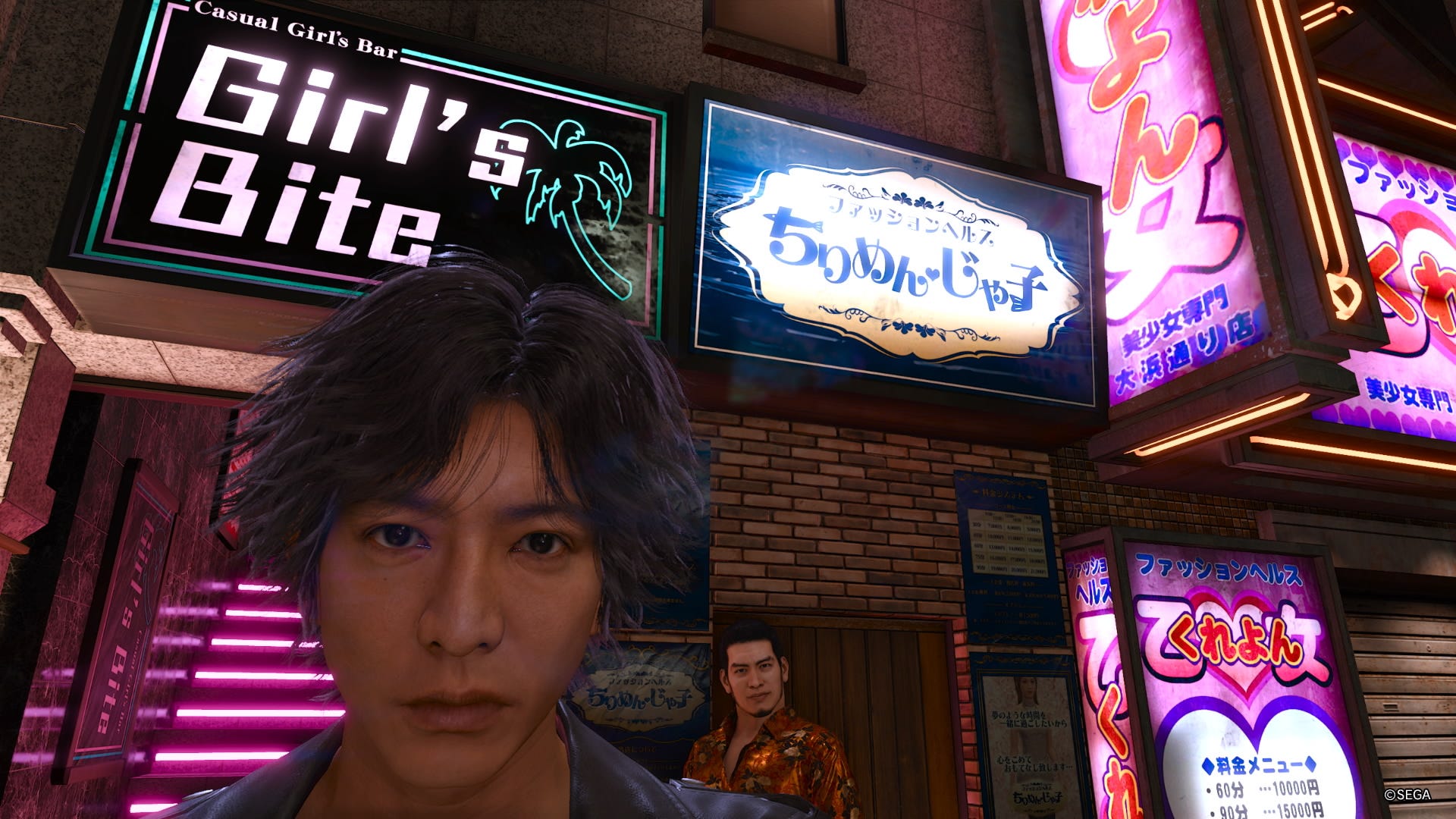
There is some “detective-y” stuff in Lost Judgment, mind. The first twenty minutes of the game (the same content in the demo) seem specifically designed to reassure players who found the frequent, clumsy “tailing a suspect” sequences from the original game unbearable. (Tailing is still bad, but there’s a bigger margin for error and it happens maybe twice in the main storyline.) Yagami does a bit of investigation and sneaking, and in my favorite, tragically underused addition to Lost Judgment, he scales buildings ala Crazy Climber.
But it usually comes down to fisticuffs in the end. Lost Judgment outdoes itself in the combat department, with an arsenal of fighting styles and techniques that give players a clever, satisfying and painful solution to any situation. The combat and experience systems give players incentive to try new tricks rather than lazily mashing through. I’d recommend more combat-experienced players (fighting game heads, Platinum fans, Monster Hunters) to play this game on Hard difficulty to really get all the fun out of it.
Ripped from the headlines
This time, Yagami’s snooping for a case about high school bullying. This puts us into highly topical Law and Order territory, with a subject that’s just as familiar to audiences outside Japan.
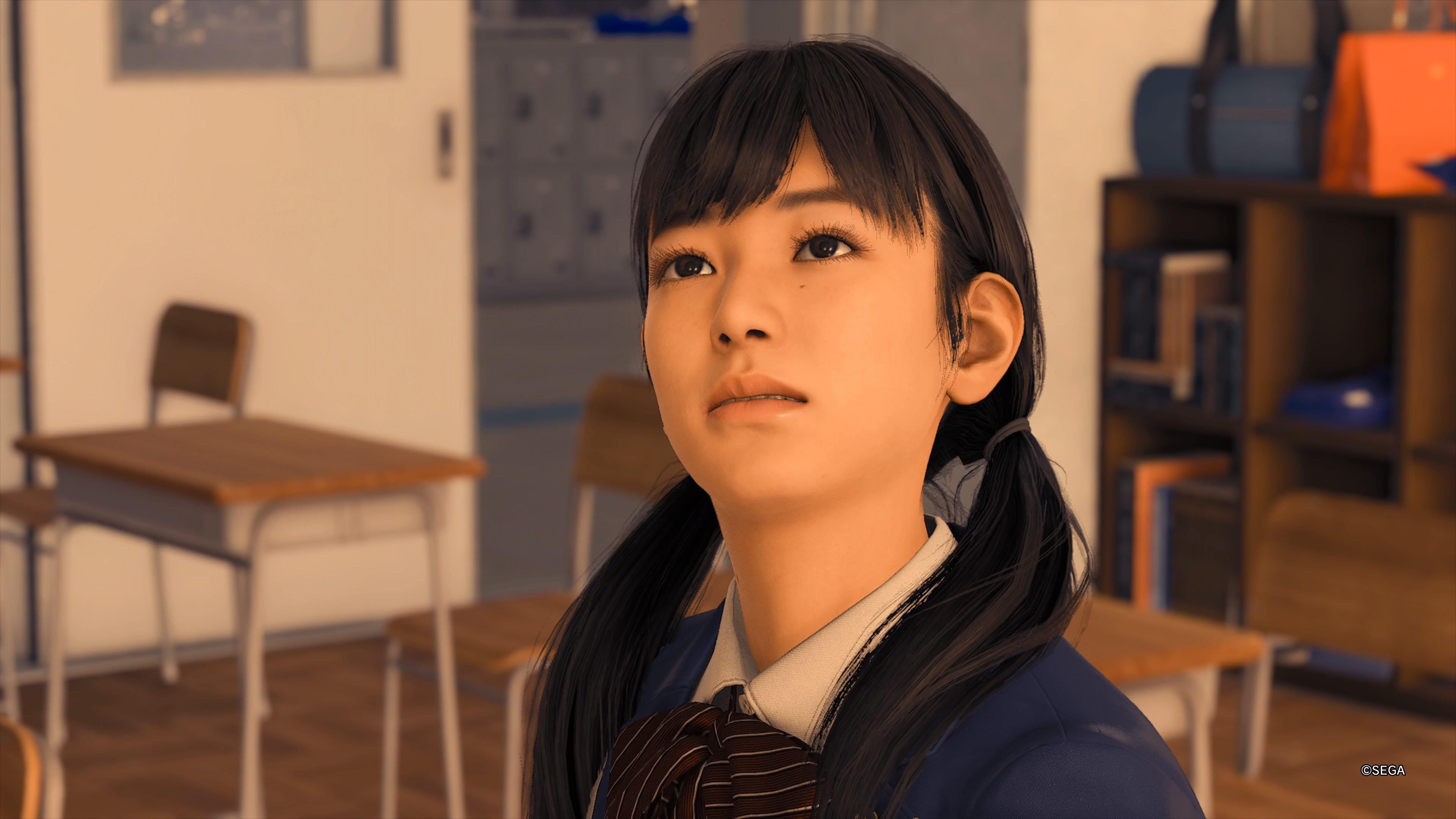
The execution, on the other hand, is pure J-drama, with our smooth celebrity hero slipping into the role of the Cool Guy Teacher. Yagami sets up Saved By The Bell-level schemes to embarrass the bullies and stares soulfully to reach those kids when nobody else can. He also beats the living shit out of them when all else fails, which is of course satisfying.
That being said, neither the characterizations of the school kids involved in the bullying nor Yagami’s goofy “solutions” to bullying are remotely convincing as serious takes on the topic. It’s probably for the better that the main story bounces Yagami off the classroom beat quickly: Detective Skinny-Jeans is never believable in this position, and most importantly, neither are the students.
Yakuza series stories are reliably twisty page-turners. It’s standard for this series to say that the inciting event goes “all the way to the top!”, and the classroom drama quickly spirals off into gangster treachery, political intrigue, legal hijinks, and violent chaos at every level. Critics often talk about the tonal whiplash between the Yakuza series’ main stories and its goofy side stories, but here the story itself starts out cartoonish and gets grittier and more tragic at every step.
It’s a satisfying tale, building an unexpected connection between the bullying subject matter and the Tokyo underworld. Without spoiling any details, Lost Judgment presents a compelling, surprisingly relatable villain, a twisted but deeply human mirror image of Yagami in search of justice on his own terms.
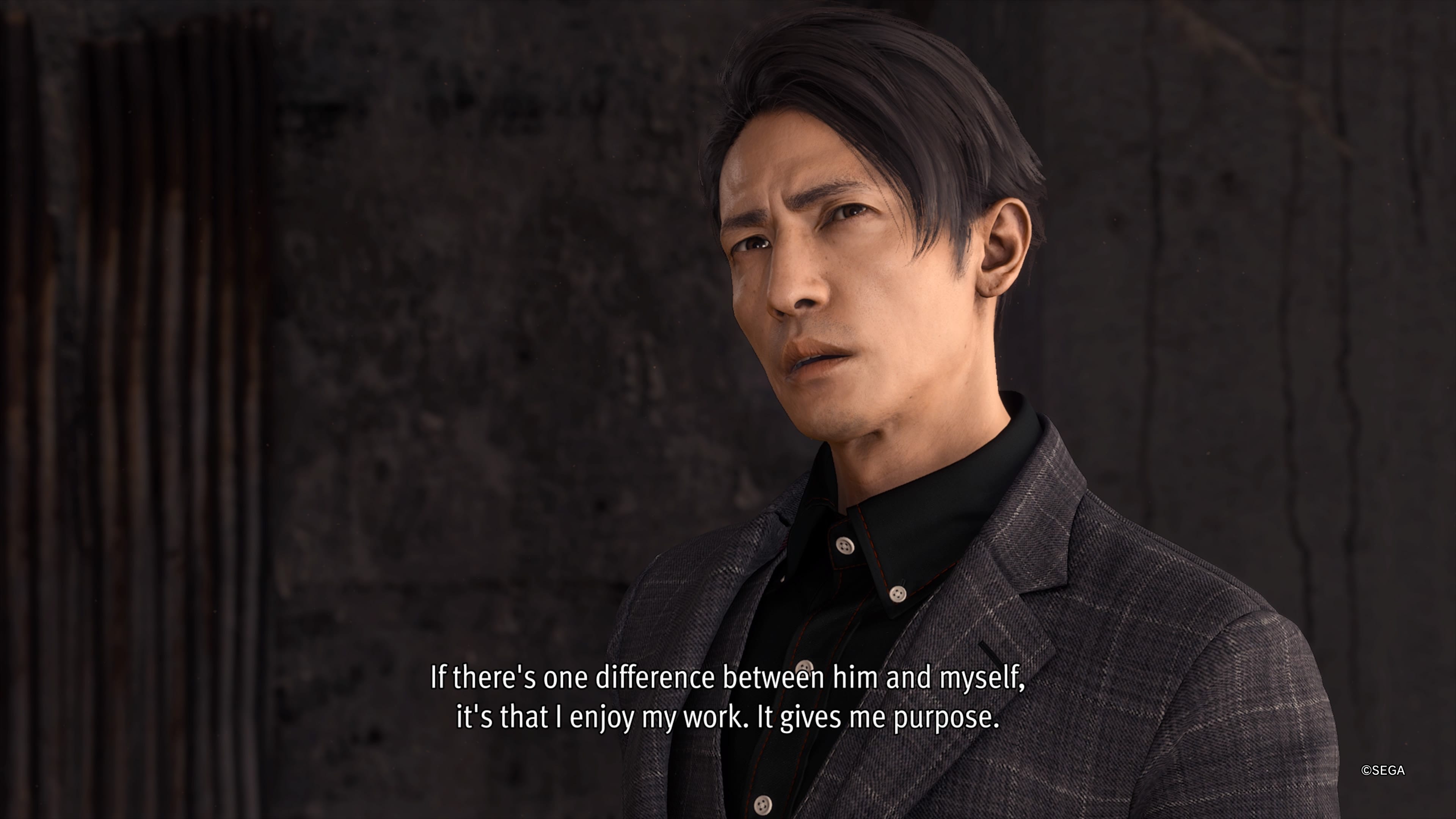
The motion-captured performances are strong, as are the performances given by real-life Japanese actors who’ve lent their likenesses and their movements to the major characters. But in the hyper-real, photo-accurate world of Lost Judgment, you’ll also experience a weird uncanny feeling as some newly created character models look just a bit more real than those returning from the previous game.
From one to three cities
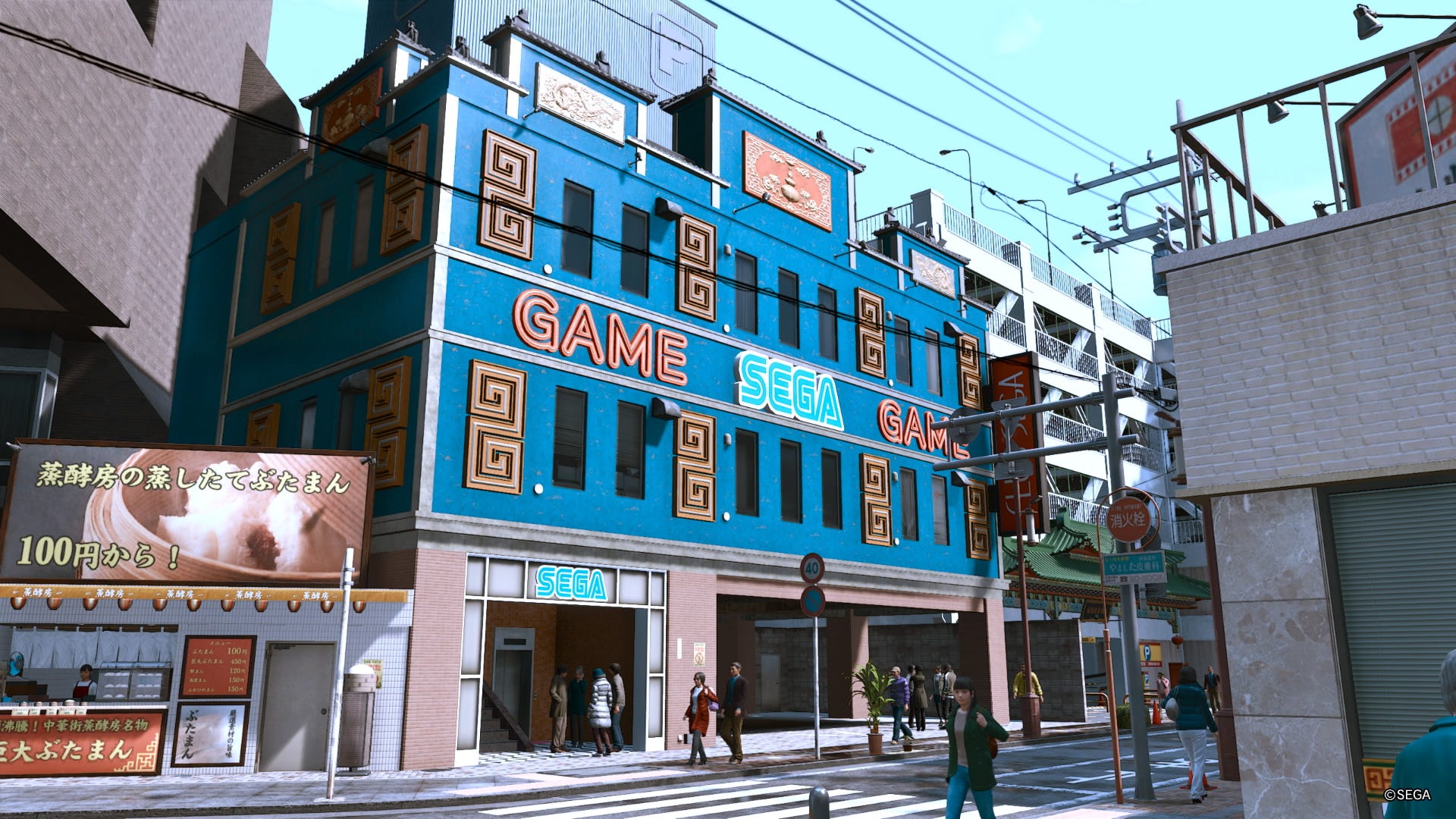
In order to tell its story, Lost Judgment adds not just Seiryo High School to explore, but also Isezaki Ijincho, the almost real-life town (as seen in Like a Dragon) in which the fictional school is located. (It would be pretty weird to have a high school in seedy Kamurocho, the site of most of these games.) Though the story does move back and forth between Kamurocho and Ijincho, Kamurocho feels very much like an afterthought in this game, nowhere near as densely packed with activities as other Yakuza-series titles.
This game’s really about exploring Ijincho, which shouldn’t be an issue for series veterans who have perhaps already seen many hundreds of hours’ worth of adventure in Kamurocho.
(Yagami’s Sega Master System collection is also stuck in Kamurocho, which means you never really get around to playing Enduro Racer and Sagaia like I know you had hoped to do.)

While a beautiful setting to look at— the ferris wheel always gets a wistful sigh out of me— Ijincho presents its own issues as an adventure map in a video game. It’s nowhere near as tightly packed as Kamurocho, so early on Yagami gets a skateboard to cover those wide expanses. Even with the benefit of a ride that’s fun to get around on for its own sake— as well as unlimited fast travel-- the Ijincho map is just a lot less convenient than Kamurocho. It’s much slower to get from one point of interest to the next, major attractions are all packed into the far corners of the map, and shops and restaurants are few and far between.
The issue with the high school, on the other hand… well, it’s a standard Japanese high school, uniform in design. It’s also the game’s designated “side story island”, and it’s just not a lot of fun running back and forth between three identical floors containing three identical long hallways for hours at a time as you play the same mini-games over and over again. There’s a courtyard and a gym to explore as well, but by its nature it’s just not a very exciting setting. I generally avoid fast travel as a killer of immersion: I was begging for it here. So once the plot no longer required me to drop by Seiryo, I stopped.
My dilemma
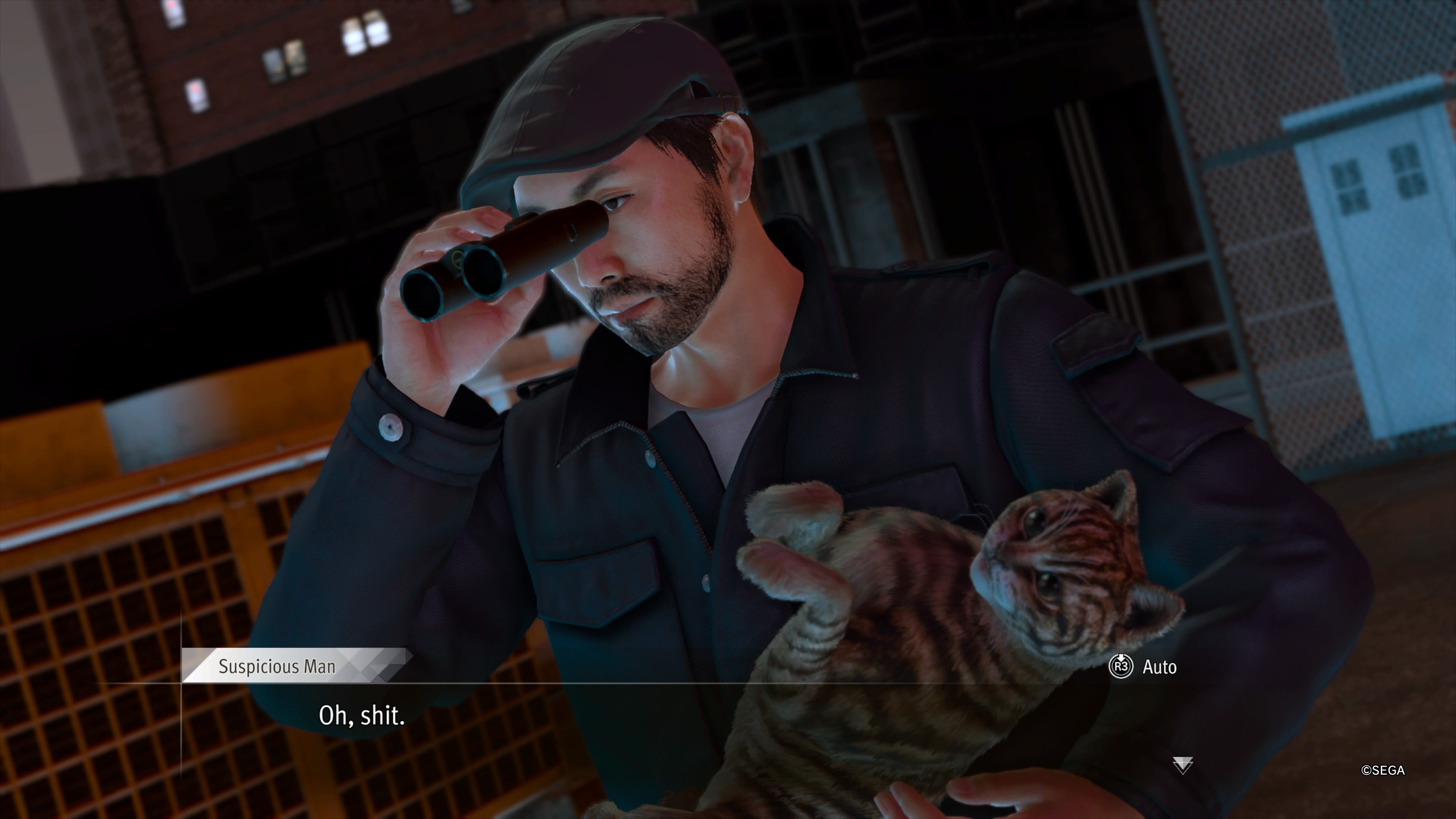
Unfortunately for me, this had consequences. When I stopped going to Seiryo around Chapter 4, I stopped getting side stories in town, too. I assumed that I just needed to advance the story for more side cases to show up, and for new locations to open up in town. This never happened. Instead I got swept away in the main story, turning the pages as fast as I could, and managing to finish the story in a pretty slim 25 hours.
It was only towards the end that I started to suspect I was missing something (shouldn’t I have been on a date by now?) and started to look up guides. Sure enough, the reason that the maps seemed a little dry was that certain aspects of city life don’t unlock until you’ve played the school stories for hours.
So I’ve been doing the school stuff *after* I beat the game, and I have to say, I’m not nearly as enthused about it.
Seiryo High: Subquest island
Here’s a secret about Seiryo High: If you watch the credits, you’ll notice it’s credited to a completely different team of people. Seiryo High is actually a whole other game, a single, massive, independent B-part with little impact on the core game.
Side stories have been like that for a long time in the Yakuza series, so why is this a big deal? It’s all in the structure, and unfortunately the structure of School Stories is pretty boring.
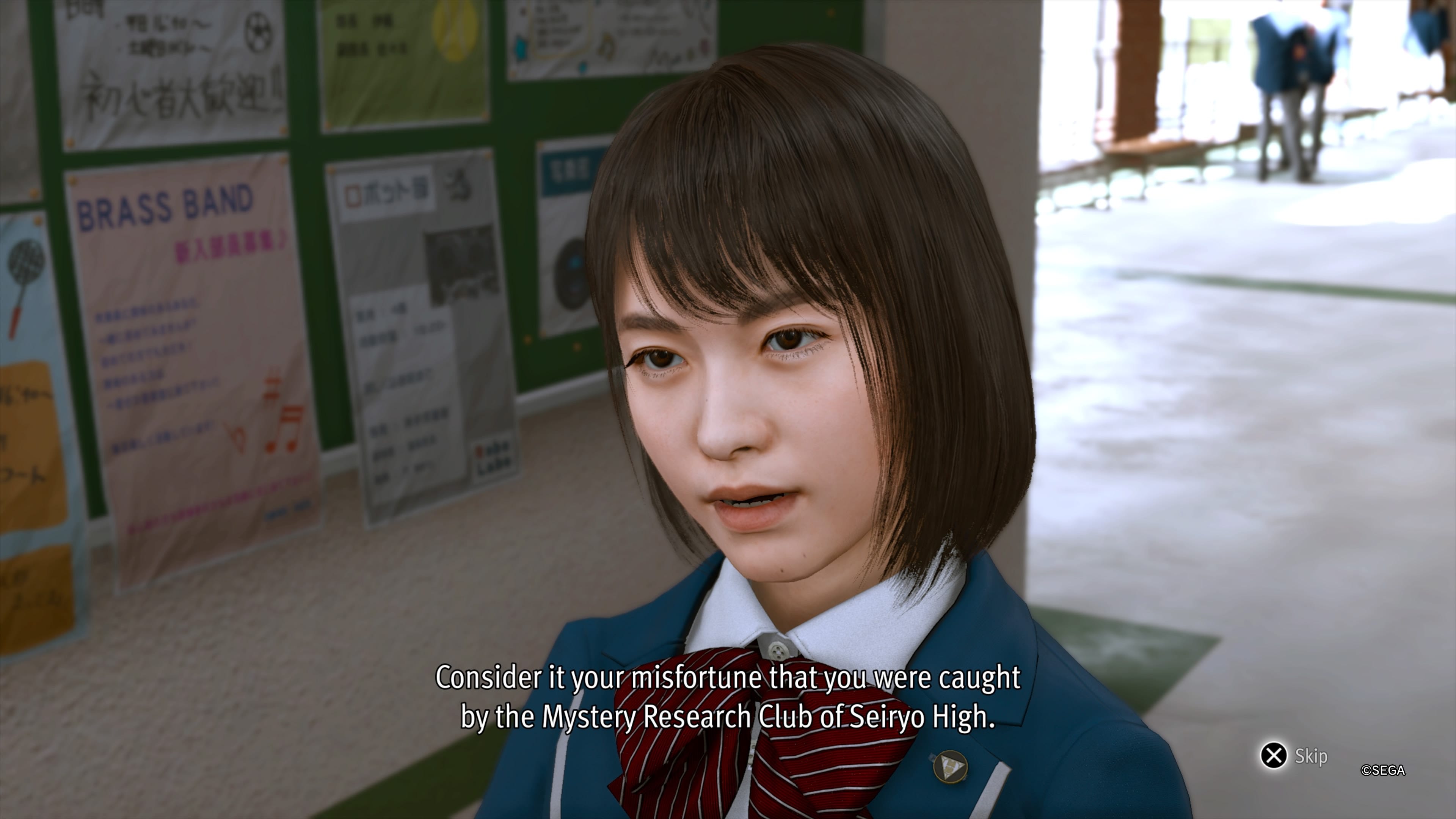
The running thread of School Stories is the delightful girl detective Kyoko Amasawa, who catches Yagami sneaking around in the main story and extorts him into working for her Mystery Club. What do we do in the Mystery Club? Well, we investigate all the other clubs, because they might be involved in the rise of a new gang in Ijincho. Players of the original Judgment will never want to hear of the obnoxious Keihin gang ever again in their lives, but here they are, for the sake of following up.

Every club investigation involves Yagami playing a mini-game repeatedly while checking in on a certain student— a star member, a club president— who’s suspected of working with “the Professor”, a shady figure who’s hooking up Seiryo High students with money and power. If you’re looking for “Yakuza goofy”, it’s all here, from Yagami joining a biker gang to a boxing gym story shamelessly ripped from Grappler Baki.
The problem, again, is structure. Each school story is tied to a mini-game: dance is a rhythm game, the skate crew has Tony Hawk’s Pro Skater in miniature, and so on. In order to get through these storylines, we have to play the mini-games over and over again: the boxing story in particular is egregiously long and repetitive. Do I really need to fight this many guys?
Most of the mini-games simply don’t hold up to this much play. I didn’t have a lot of fun playing the same song four times in a row in dance club, but that’s what it calls for. Winning with the Robotics team costs more money in rare materials than you’ll spend in the entire rest of the game. (If you want to be rich, I hope you know how to play mahjong, by the way.)
With the way School Stories is structured, you’re usually grinding out one club at a time rather than going back and forth between them, which is exactly what makes it feel so monotonous. Worse, when story events happen, you have to run the length of the school back to home base over and over again. There’s no fast travel in school, and you feel it.
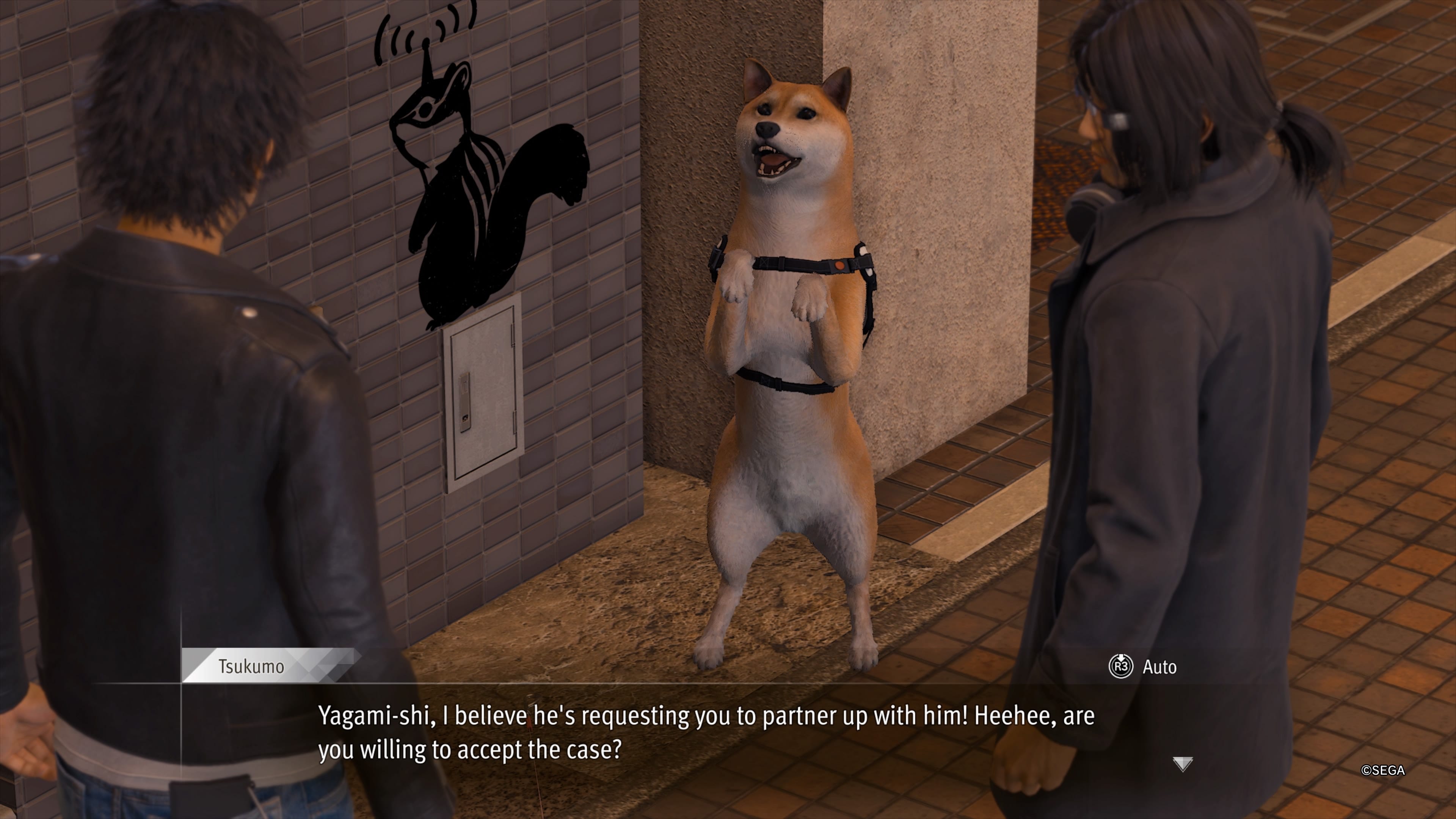
School Stories thus winds up a big grindy drag, the total opposite of the tightly designed and amusing Yakuza side stories that make the series so much fun. Those same hilarious moments are there— beating a Segata Sanshiro knockoff at Virtua Fighter, getting your head stuck in a movie poster— but there’s some painful repetition involved in getting to the good parts.
All these games have some grind elements, but they tend to be stuck to the very end, for those players who love to grind for grinding’s sake. In Judgment, I could happily ignore grinding materials for extracts and drone parts. The difference in Lost Judgment is that the grind is introduced to a pretty integral part of the game. I didn’t need to finish School Stories to finish the main story, but School Stories is also half the game. I’m not going to skip it!
These games are long enough that I don’t need them to add additional hours of pure busy work to their play time just to pad out the number. This a video game, not a job: the last thing I want to feel is obligated.
Worth it?
Lost Judgment, more than the other titles, is a package of a lot of disparate elements. Things don’t come together as smoothly as usual; it even gets a little lumpy.
I liked the combat in Lost Judgment; in fact I think it’s probably best in the series. I had a great time just walking around town, getting into fights, and using all the different cool moves I had. As an action buff, I never got tired of fighting. I also really appreciated The Gauntlet, a deliberately hard mode full of tough combat quests that test your mastery of the system.
I was “okay” on the story in Lost Judgment. It wasn’t the greatest with the bullying subject matter— particularly anything involving the kids themselves. But the story it does tell, the one about power, authority, and the complicity of silence, was strong. I again cannot restate how compelling the villain was. On the other hand, it places a lot of weight on a very contrived event as kind of a magic bullet to change all minds and solve all problems, which I don’t like to see in any story.

I didn’t like the inelegant way Lost Judgment handled side activities at all. Side cases were easier to miss than I’d ever noticed before: a lot of them seem deliberately designed to send the player in search of a strategy guide to find (not complete, find). School Stories shouldn’t be boring on paper, and yet it is. In its current state, it feels like the developers were deliberately adding hours to the game’s run time.
This is a large series. I would not recommend Lost Judgment as anybody’s first Yakuza-series game (That’s Zero), and it’s no best-in-series either (Kiwami 2 is probably never to be unseated). But a low-end Yakuza series game is still top-shelf stuff; otherwise, I never would have played them all.
Despite how rough Lost Judgment is, I’d really like to see Yagami’s adventures continue. (The future of the Judgment series has been called into question due to celebrity likeness rights; specifically Kimura’s agency not wanting his likeness to appear on a moddable platform.) This character— along with his bag of tricks— is a lot of fun, and I think he’ll be even more fun in a better-cooked game.
PS5 notes
I was lucky enough to play Lost Judgment on PS5. The big difference is of course the fact that you’re playing the game off an SSD drive, meaning it loads instantly. Even as you move between three massive locations, you won’t see a load screen. The areas load up on demand even with fast travel, which is really going to change the way you run your errands late in the game. The other thing you might notice is the raytraced lighting. The city lights have never had more depth, and running through the sterile Seiryo High at night is (the first time, anyway) uniquely creepy.
